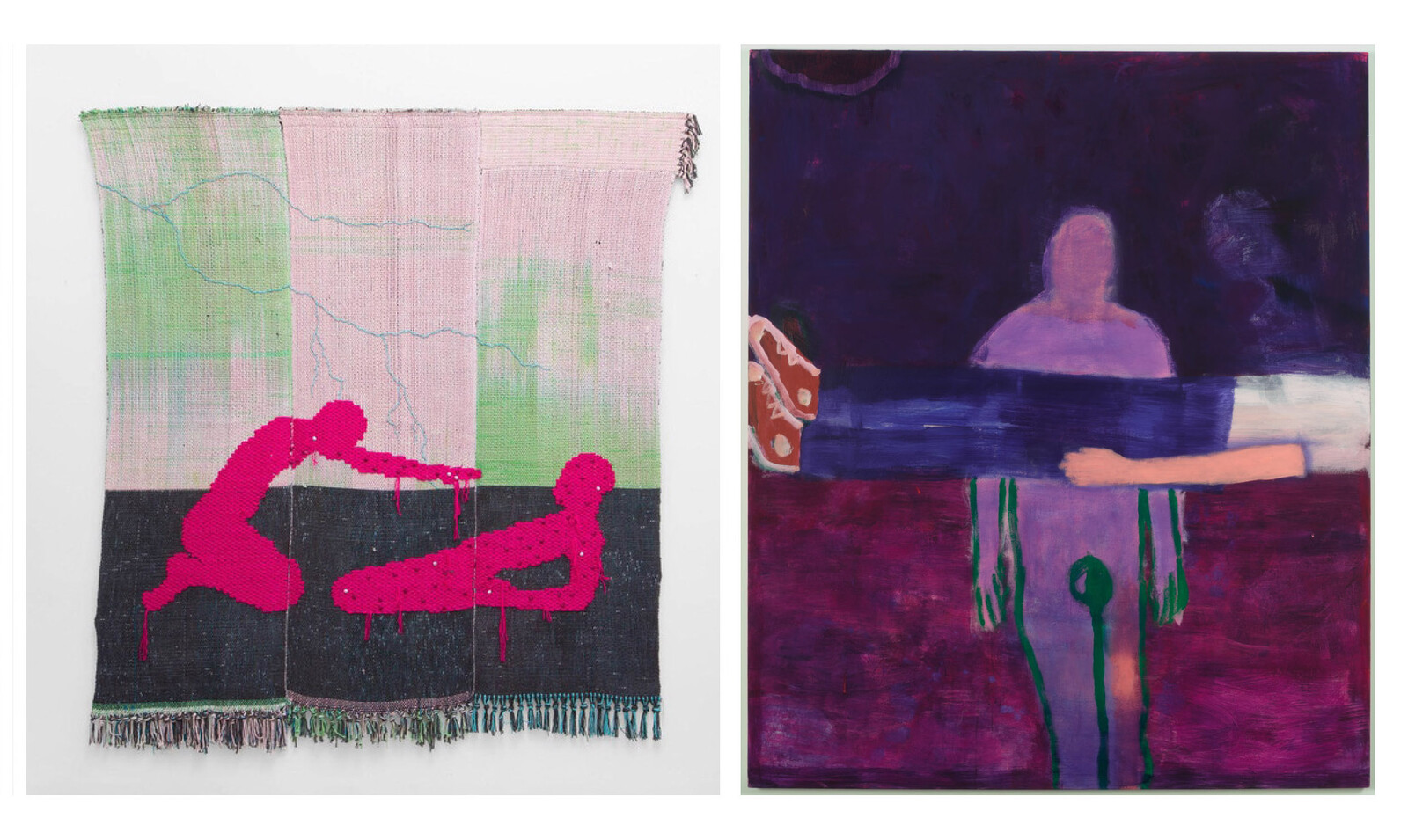September 24–December 23, 2021
Carpenter Center for the Visual Arts
24 Quincy Street
Cambridge, Massachusetts 02138
United States
T +1 617 496 5387
ccva@fas.harvard.edu
The Carpenter Center for the Visual Arts is pleased to reopen its doors to the public with a two-person exhibition of recent tapestries by Diedrick Brackens and paintings by Katherine Bradford. Brackens and Bradford’s works resonate within our moment of heightened emotion, isolation, and introspection in the midst of profound change to our social, economic, and public health realities. Both artists create dreamlike scenes that snap back and forth between the symbolic and the specific. Details speak to lived experiences as well as collective histories and memories. With parallel interests in materiality and the act of making, both artists use the specific physical and chromatic qualities of their chosen mediums—paint and yarn—to create ambiguous pictorial spaces that frame relationships between bodies. Their scenes seem to exist both outside and deeply embedded within this uncertain time, evoking cautions, questions, and desires about our bodies in relation to each other.
Diedrick Brackens makes figurative and abstract tapestries using techniques drawn from West African weaving, quilting traditions of the American South, and European tapestry-making. With an interest in allegory and symbolism, he combines autobiographical narrative with imagery that evokes broader histories of Black and queer identities. Silhouetted figures, plants, and animals move against optically charged passages of pattern and saturated color. Brackens uses traditional techniques to hand-dye cotton yarn, a material that can summon histories of enslavement. Each weaving renders an iconic, tactile, and tender presentation of experiences that feel at once personal and historical.
Katherine Bradford sets characters from her imagination against vast expanses like outer space and the ocean, or within closely cropped, abstract fields defined by her paint’s materiality and color. She creates her characters with an economy of painterly marks; they often lack facial features and are partially clothed. Nonetheless, they announce recognizable character traits in their gestures, body language, and physical relationships. Without the traditional markers of gender, her groups of people exist in collective fluidity, fitting together like indeterminate puzzle pieces. Against color fields that recall the luminous surfaces of midcentury abstraction, her figures play out scenes of adventure, solitude, collectivity, and intimacy.
Opening reception plans will be announced at a later date. All visitors to the Carpenter Center must comply with Harvard University COVID-19 policies and protocols. For the most up-to-date information regarding the Carpenter Center’s reopening, sign up to receive Carpenter Center emails and follow the Carpenter Center on Instagram.
For press inquiries, please contact Dan Byers at dbyers [at] fas.harvard.edu.
Carpenter Center for the Visual Arts
Free and open to the public, the Carpenter Center for the Visual Arts is the center for contemporary art and artists at Harvard University. Through exhibitions, new commissions, public events, publications, and residencies, the Carpenter Center is dedicated to artist-centered programming and to build- ing a vibrant community around contemporary art. This community is defined by an ethos of experimentation, diverse perspectives, and making connections across disciplines and fields. Housed within Le Corbusier’s only building in North America, the Carpenter Center’s projects are enriched by the educational mission of the Department of Art, Film, and Visual Studies, and the cultural resources of a large research university.
Generous support for Carpenter Center programming is provided by The Andy Warhol Foundation for the Visual Arts.



